Trials carried out at Fish Nutrition Laboratory in Ensenada, Mexico
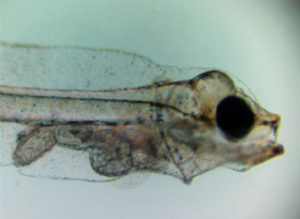
The California halibut (Paralichthys californicus), which is distributed along the western coast of the United States from the state of Washington to southern Baja California, presently supports commercial and sport fisheries in the U.S. and Mexico. As with many marine fish stocks, annual landings have decreased over time, stimulating research in aquaculture and stock enhancement of the species in both countries.
One of the principal research areas in marine aquaculture is to replace the labor-intensive and expensive use of live prey during larval production with microdiets tailored to the nutritional requirements and digestive capabilities of the larvae of interest. This development of microdiets requires a thorough understanding of the digestion processes that occur during growth.
Feeding trial
The authors recently conducted a study to evaluate the efficiency of various microdiets to support adequate growth and survival in California halibut larvae. The feeding trial evaluated three microdiets produced by different manufacturing techniques.
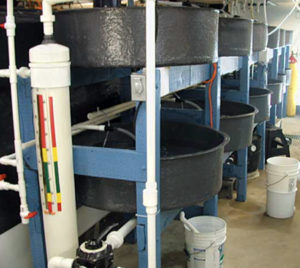
Halibut eggs from broodstock spawned at the Sea Laboratory in Redondo Beach, California, USA, under natural temperature and photoperiod were transported to the Fish Nutrition Laboratory of the Centro de Investigación Científica y de Educación Superior de Ensenada Department of Aquaculture in Ensenada, Mexico. Following hatching, 2,000 larvae were stocked in round 150-liter fiberglass tanks at a density of 13 larvae per liter.
The larvae were fed live prey enriched with highly unsaturated fatty acids at 5 rotifers per millimeter from first feeding at day 3 to day 16, and artemia at 5 to 7 per millimeter thereafter. Two types of experimental microdiets were fed in combination with artemia from day 20. The larvae were completely weaned by day 26.
One microbound diet (MCB) used artemia cysts as a protein source, and the other was a spray-dried micro-bound diet (MED) based on fresh fisheries products. A commercial diet (ALH) was used as a reference treatment, with a live-prey-only treatment as a control (CTR). Three replicate tanks were used for each diet. Growth, mortality, and pigmentation of the larvae were used as response variables to evaluate the microdiets.
Results
Growth in terms of standard length (Fig. 1), wet weight, and dry weight was significantly (P < 0.05) lower for the microdiets than the control treatment, but no significant differences were found among them. However, significantly higher mortality was found for treatments ALH and MCB compared to the MED and CTR treatments (Fig. 2).
Based on visual observations, larvae fed the microdiets had relatively lower ingestion rates than the live prey-fed larvae, which would explain the lower growth and survival observed for these treatments. Interestingly, the control treatment produced a significantly higher percentage (68 percent) of albinism compared to the microdiets (27 percent).
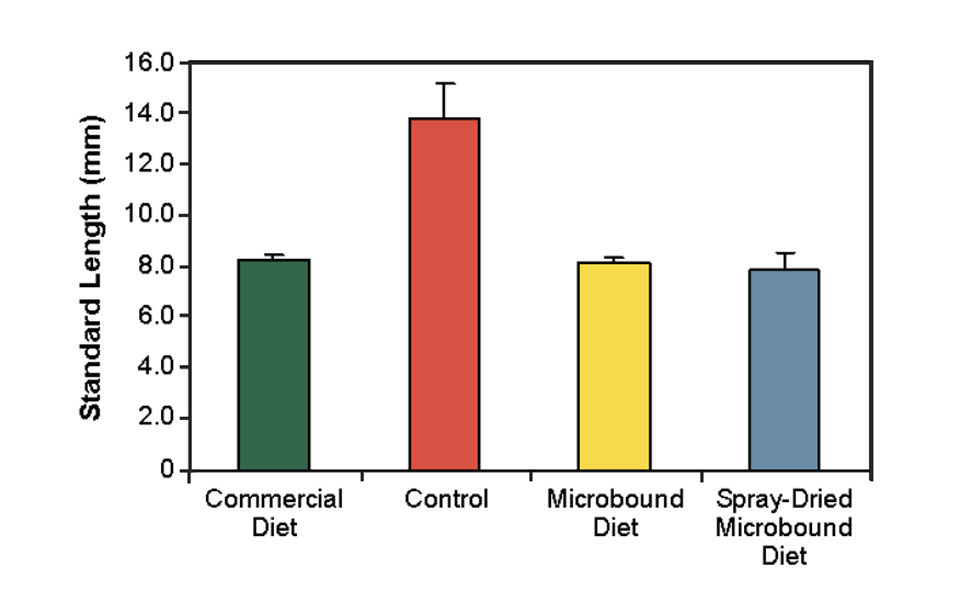
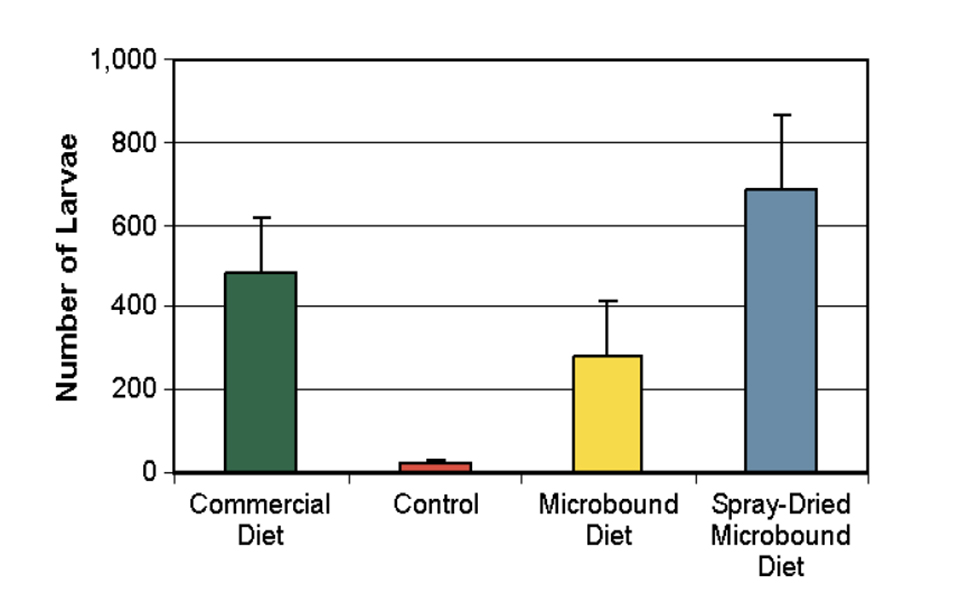
Recommendations
Further research is needed to increase ingestion of the microdiets to provide sufficient nutrients for the fast-growing larvae. The authors recommend the use of protein hydrolysates of marine organisms such as krill to increase ingestion rates. In addition, a longer cofeeding period would increase acceptance and digestion of the microdiets.
Albinism
The possible mechanisms of malpigmentation in flatfish juveniles need to be evaluated. Light, substratum and diet are probable causes. In this experiment, the authors suspected differences in fatty acid profile and vitamin A were the likely causes. It is likely the fatty acid enrichment of the live prey was not adequate for proper pigmentation in California halibut larvae.
(Editor’s Note: This article was originally published in the December 2004 print edition of the Global Aquaculture Advocate.)
Now that you've reached the end of the article ...
… please consider supporting GSA’s mission to advance responsible seafood practices through education, advocacy and third-party assurances. The Advocate aims to document the evolution of responsible seafood practices and share the expansive knowledge of our vast network of contributors.
By becoming a Global Seafood Alliance member, you’re ensuring that all of the pre-competitive work we do through member benefits, resources and events can continue. Individual membership costs just $50 a year.
Not a GSA member? Join us.
Authors
-
J.P. Lazo, Ph. D.
Centro de Investigación Científica y de Educación Superior de Ensenada
Km. 107 Carretera Tijuana-Ensenada
CP 22860, Ensenada, B.C.
Mexico, AP 2732 -
D. Vargas, B.S.
Centro de Investigación Científica y de Educación Superior de Ensenada
Km. 107 Carretera Tijuana-Ensenada
CP 22860, Ensenada, B.C.
Mexico, AP 2732 -
C. Medina, M.S.
Centro de Investigación Científica y de Educación Superior de Ensenada
Km. 107 Carretera Tijuana-Ensenada
CP 22860, Ensenada, B.C.
Mexico, AP 2732 -
M. Zacarias, M.S.
Centro de Investigación Científica y de Educación Superior de Ensenada
Km. 107 Carretera Tijuana-Ensenada
CP 22860, Ensenada, B.C.
Mexico, AP 2732 -
A. Garcia-Ortega, Ph.D.
CIAD Unidad Mazatlán
Mazatlán, Sinaloa, Mexico -
R. Pedroza-Islas, Ph.D.
Universidad Iberoamericana
Santa Fe, México D.F., Mexico
Related Posts
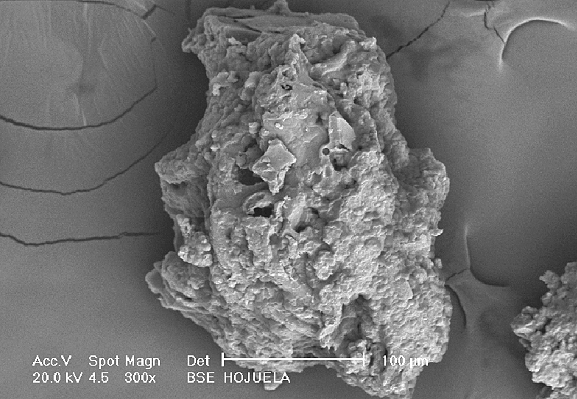
Health & Welfare
Compound microdiets for marine fish larvae: Key parameters
Research has been directed toward developing compound microdiets to ameliorate variability and poor nutritional quality of live food.

Health & Welfare
Protein hydrolysates in larval fish nutrition
Protein hydrolysates are currently used as partial substitutes for fishmeal in high-quality artificial diets since their inclusion in feeds promotes growth and survival.

Health & Welfare
Green water culture of California halibut larvae
Although aquaculture offers potential for the production of California halibut, several aspects of production have yet to be optimized.
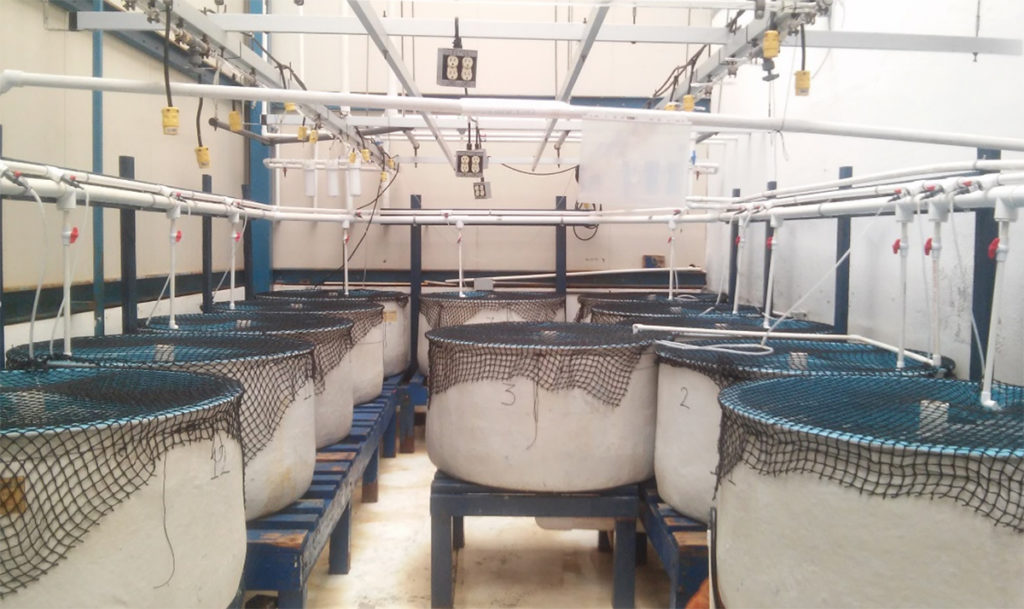
Health & Welfare
Enteritis induction by soybean meal in totoaba diets
This study investigated the effects of increasing levels of dietary soybean meal (SBM) with constant taurine supply in the induction of enteritis in juvenile totoaba.


